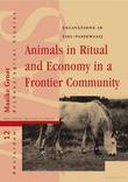Explore

Animals in Ritual and Economy in a Roman Frontier Community
Maaike Groot
2008
Voor de kleine plattelandsgemeenschappen in Romeins Nederland vormde vee de basis van de plaatselijke economie en het dagelijks bestaan. Vee leverde voedsel, maar ook mest en trekkracht die nodig was voor de akkerbouw. Een surplus aan dierlijke producten werd geproduceerd voor de Romeinse markt. Daarnaast speelden dieren ook een belangrijke rol in rituele praktijken. Deze studie, die is gebaseerd op een grote hoeveelheid dierlijk bot uit grootschalige archeologische opgravingen in Tiel-Passewaaij, heeft verrassende nieuwe inzichten opgeleverd in zowel de economische als de symbolische aspecten van dieren.
This book is included in DOAB.
Why read this book? Have your say.
You must be logged in to comment.
Rights Information
Are you the author or publisher of this work? If so, you can claim it as yours by registering as an Unglue.it rights holder.Downloads
- 123 - pdf (CC BY-NC) at OAPEN Library.
Keywords
- Archaeology
- Archaeology by period / region
- Archeologie
- Archeology
- Humanities
- Prehistoric archaeology
- thema EDItEUR::3 Time period qualifiers::3B Prehistory
- thema EDItEUR::N History and Archaeology::NK Archaeology
- thema EDItEUR::N History and Archaeology::NK Archaeology::NKD Archaeology by period / region
Links
DOI: 10.5117/9789089640222Editions

